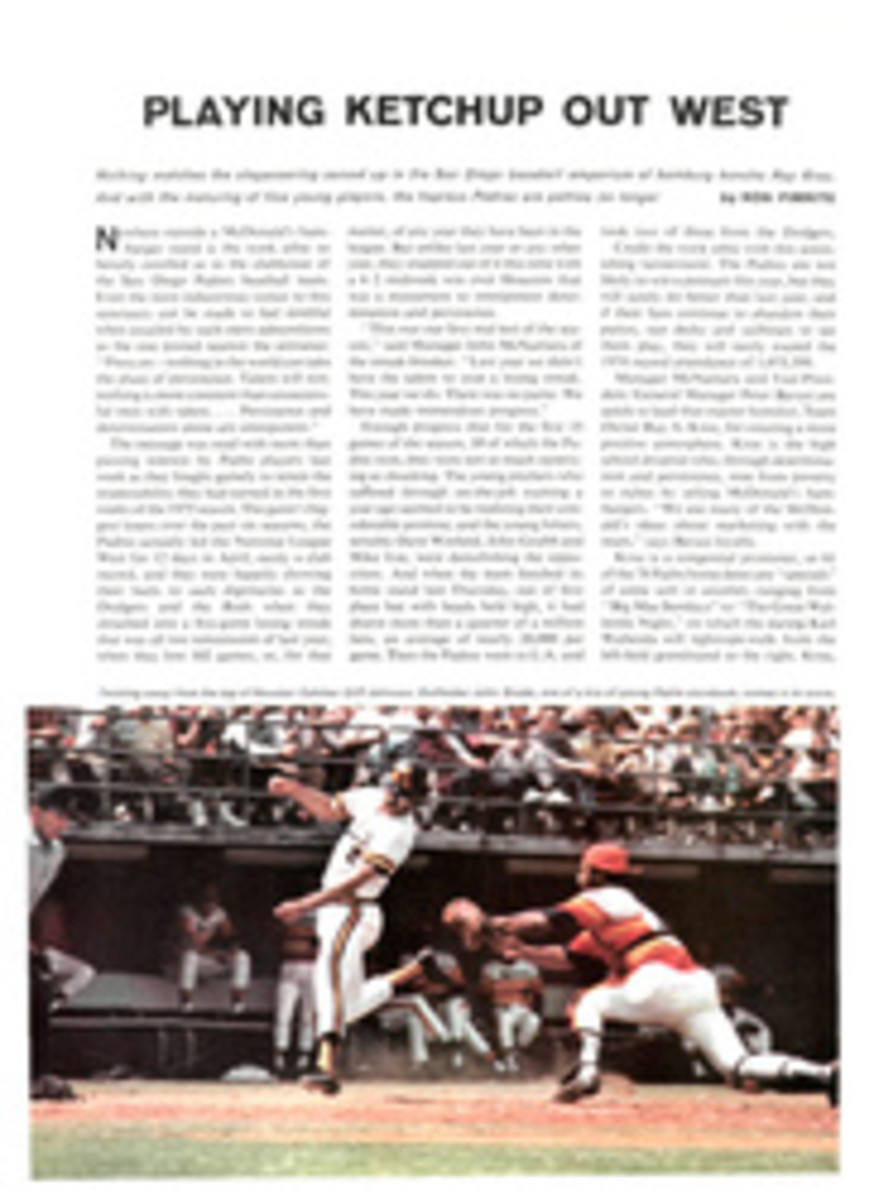
GOOD NEWS IN THE WIND: A SURE WAY TO GAUGE GUSTS IN TRACK AND FIELD
It used to be easy to know which way the wind was blowing. Public buildings, shops and homes were topped by weather vanes—prancing horses, crowing roosters, silhouetted ladies of liberty and whirligigs with swinging arms. Of course, the first and handiest gauge of a breeze was the sailor's finger, moistened and raised to the wind.
Modern methods are more complex, particularly when wind velocity must be determined, and most particularly in track and field. If a record is to stand, the rate of a favoring wind must not exceed an average of 2.0 meters per second.
At track meets anemometers (wind gauges) are placed roughly at the midway point of the straightaway or runway and come in a variety of styles ranging from a weather vane with rotating cups to a cylinder encasing a set of vanes, shaped like propellers, and connected to a meter outside.
The wind gauge is used for the dashes, the high hurdles, long jump and triple jump. It is activated at the start or during the event and registers the velocity of wind during a designated time—i.e., 10 seconds for the 100-meter dash, five seconds for the long jump. With most gauges, to compute the average velocity the total velocity registered is divided by the designated time accorded each event. However, with some gauges the operator has to use a stopwatch to arrive at the time, and the readings, therefore, are subject to human error.
In a two-day period in the 1968 Olympic Games world records were established in the women's 200 meters, the triple jump and the long jump, in which Bob Beamon leaped 29'2½", a distance never approached by him or by any other jumper to this day. The wind readings during all three records measured exactly 2.0 meters per second, the uppermost limit of a favoring wind. Bert Nelson, the editor and publisher of Track and Field News, says, "The odds against this coincidence are incredibly long." Many experts believe that the difficulty in reading the gauges and the exuberance of the moment may have combined to give a faulty wind speed.
Bill Alley, a former U.S. Olympic javelin thrower, who recalls other instances where wind readings were highly suspect, has come up with a wind gauge that eliminates human error. His device is encased in a lucite tube. The vanes are visible, rotating on a jewel bearing, which is a more exact element than the drive train shaft and gears used in the other gauges. In the Alley model, wind velocity is computed and averaged automatically, the dial stopping and locking at the conclusion of the race. Furthermore, the device has an electronic printout, one model simply showing the wind measurement, the other providing a digital breakdown of wind and time.
Alley's gauge is called Model 4.47. In terms of miles per hour (rather than meters per second) 4.47 is the allowable limit of a favoring wind. Marketed by Research Engineering Corp. in Morrisville, Vt., it was used during the 1972 U.S. Olympic Trials. It will almost certainly be used in the 1976 Montreal Games. The cost of the metered model is $400. The digital with numeric printout sells for $1,500. Such is the price when man no longer lifts a finger.

